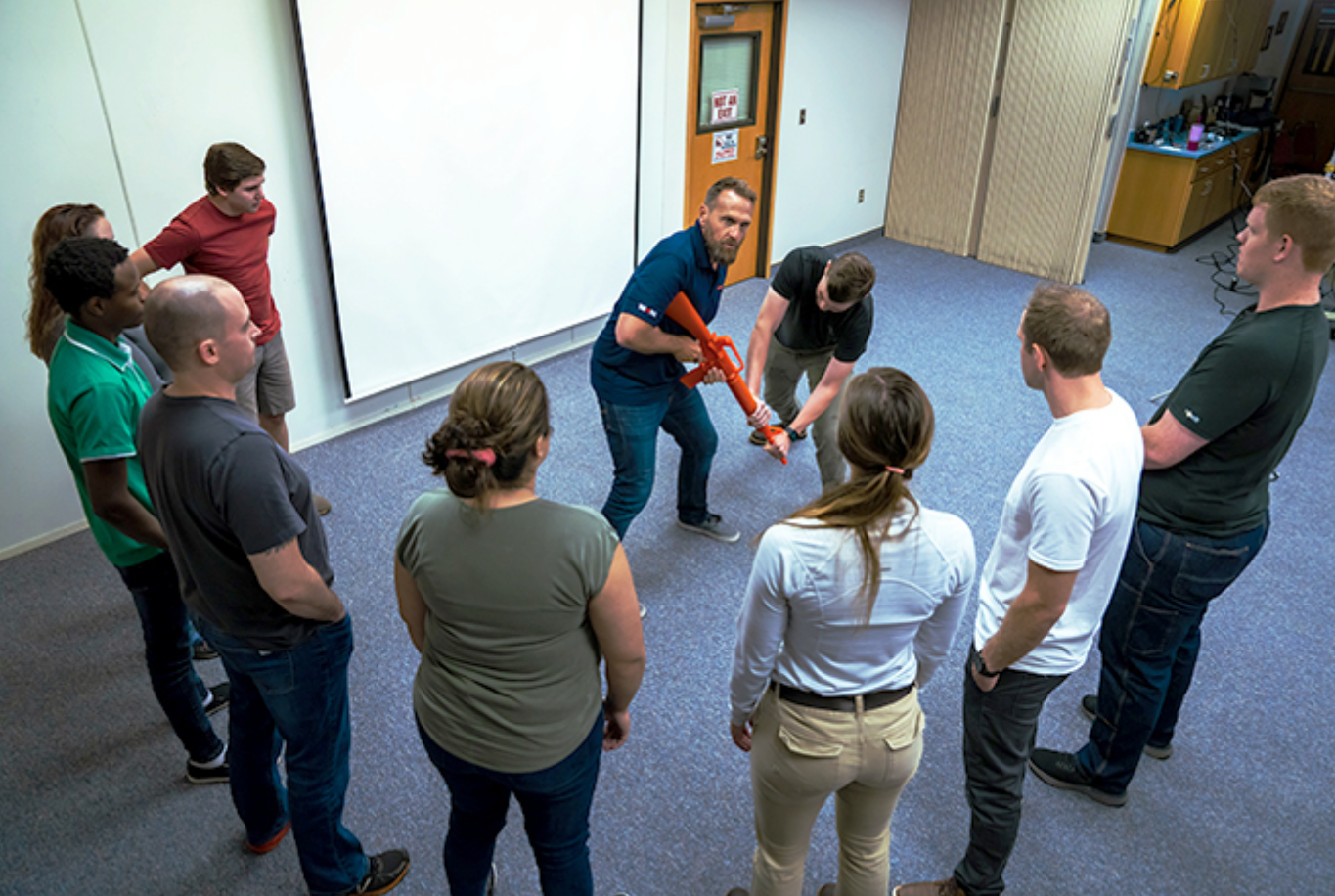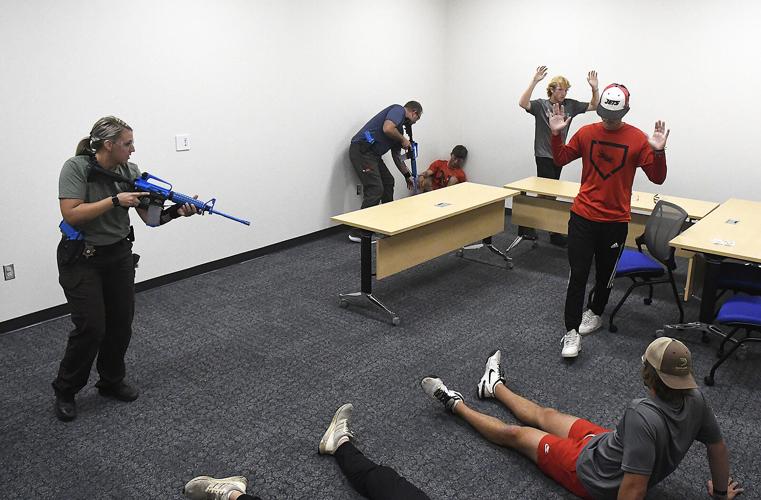Why Active Shooter Training Is Necessary for Workplace Safety
Why Active Shooter Training Is Necessary for Workplace Safety
Blog Article
Applying Active Shooter Training: Ideal Practices for Creating a Safe and Prepared Community Setting
As neighborhoods challenge the distressing fact of energetic shooter occurrences, the implementation of detailed training programs ends up being crucial. What are the crucial aspects that can transform a typical training program into a durable design for neighborhood resilience?

Understanding the Demand for Educating
In a period noted by boosting occurrences of physical violence in public spaces, recognizing the requirement for energetic shooter training has never ever been much more important. Extensive training efforts can equip participants with the expertise and skills to respond decisively.
Training promotes a feeling of empowerment and preparedness, making it possible for individuals to really feel more safe and secure in their environments. The advantages of energetic shooter training expand beyond instant reaction; they include improving communication protocols and improving total safety and security steps within organizations.
Key Elements of Effective Programs
Effective active shooter training programs integrate several essential components that improve readiness and action abilities. Thorough curriculum advancement is important, making certain that training web content is appropriate, evidence-based, and customized to the certain demands of the organization or area. This includes recognizing the characteristics of energetic shooter events and the mental influence on individuals entailed.
2nd, reasonable training circumstances need to be employed to imitate prospective situations, enabling participants to practice decision-making and reaction approaches in a controlled setting. These drills promote muscle mass memory and build confidence amongst participants.
Third, a focus on interaction protocols is essential. Developing clear lines of interaction among legislation enforcement, emergency responders, and participants ensures coordinated feedbacks during an incident. Regular updates and correspondence course assist maintain communication pathways clear and effective.
Fourth, ongoing analysis and comments systems ought to be integrated into the training program - active shooter training. Assessing the effectiveness of training through participant comments and efficiency metrics permits continuous enhancement
Finally, cultivating a culture of safety and security and preparedness within the neighborhood encourages alertness and proactive measures, making certain that individuals are not only experienced but also engaged in maintaining a protected atmosphere.
Engaging Neighborhood Stakeholders

To efficiently involve these stakeholders, it is important to communicate the objectives and advantages of the training. Holding educational sessions can help clear up the training's purpose, address worries, and lay out the functions each stakeholder might play. Creating a stakeholder advisory board can assist in ongoing dialogue, my company permitting for varied perspectives and understandings to be integrated right into the training program.
Building partnerships with neighborhood leaders and organizations is additionally critical. Their assistance can enhance outreach efforts, rise involvement, and make sure that training is customized to the unique requirements of the community. Furthermore, stakeholders can help in distributing information and sources, reinforcing the message of security and readiness.
Eventually, engaging community stakeholders not only reinforces the training campaign but additionally grows a sense of possession amongst citizens, leading to an extra resilient and informed community with the ability of responding efficiently to prospective dangers.
Educating Shipment Approaches
Using a range of training distribution methods is vital to fit the varied discovering styles and demands of individuals in active shooter training programs (active shooter training). Effective training can take numerous types, consisting of talks, hands-on simulations, on-line components, and interactive workshops. Each technique serves a distinct function and can boost the overall understanding experience

On-line components offer flexibility and accessibility, allowing participants to learn at their own speed. These can consist of video clips, tests, and discussions to evaluate understanding. Interactive workshops urge team discussions and analytic, promoting teamwork and communication skills.
Including a blended approach that integrates these techniques not just enhances the training experience however also makes sure that individuals are better prepared to respond properly in case of an active shooter situation (active shooter training). By resolving various learning preferences, organizations can develop an extra enlightened and receptive neighborhood
Continuous Analysis and Enhancement
Routine analysis and improvement of active shooter training programs are important to keeping their significance next and effectiveness. As dangers reference advance, so have to the strategies and techniques employed in training. Constant assessment ensures that training content mirrors the current intelligence on energetic shooter occurrences, integrating lessons gained from current occasions and readjusting for arising patterns.
To facilitate this procedure, organizations need to develop comments devices that consist of individual evaluations, expert testimonials, and occurrence debriefs. Collecting information on individual efficiency throughout drills and exercises is crucial, as it highlights locations requiring enhancement and notifies future training sessions. Additionally, involving with regulation enforcement and emergency situation responders can give beneficial understandings into the functionality and applicability of training protocols.
On a regular basis arranged reviews of training materials and strategies must be mandated, cultivating an environment of innovation and versatility. Organizations must also urge a society of ongoing understanding, where personnel participants feel empowered to recommend changes based upon their experiences. By committing to continual evaluation and renovation, companies not just boost the effectiveness of their energetic shooter training programs but also strengthen their overall commitment to safety and readiness within the area.
Final Thought
In final thought, reliable implementation of active shooter training requires an extensive technique that focuses on neighborhood engagement and practical simulations. By developing tailored curricula, integrating varied training methods, and fostering collaboration among stakeholders, areas can enhance readiness. Continual assessment and responses devices are essential for adjusting programs to arising dangers, consequently enhancing total security. Inevitably, a commitment to ongoing training and renovation grows a society of caution and preparedness, making certain a safer setting for all community participants.
Report this page